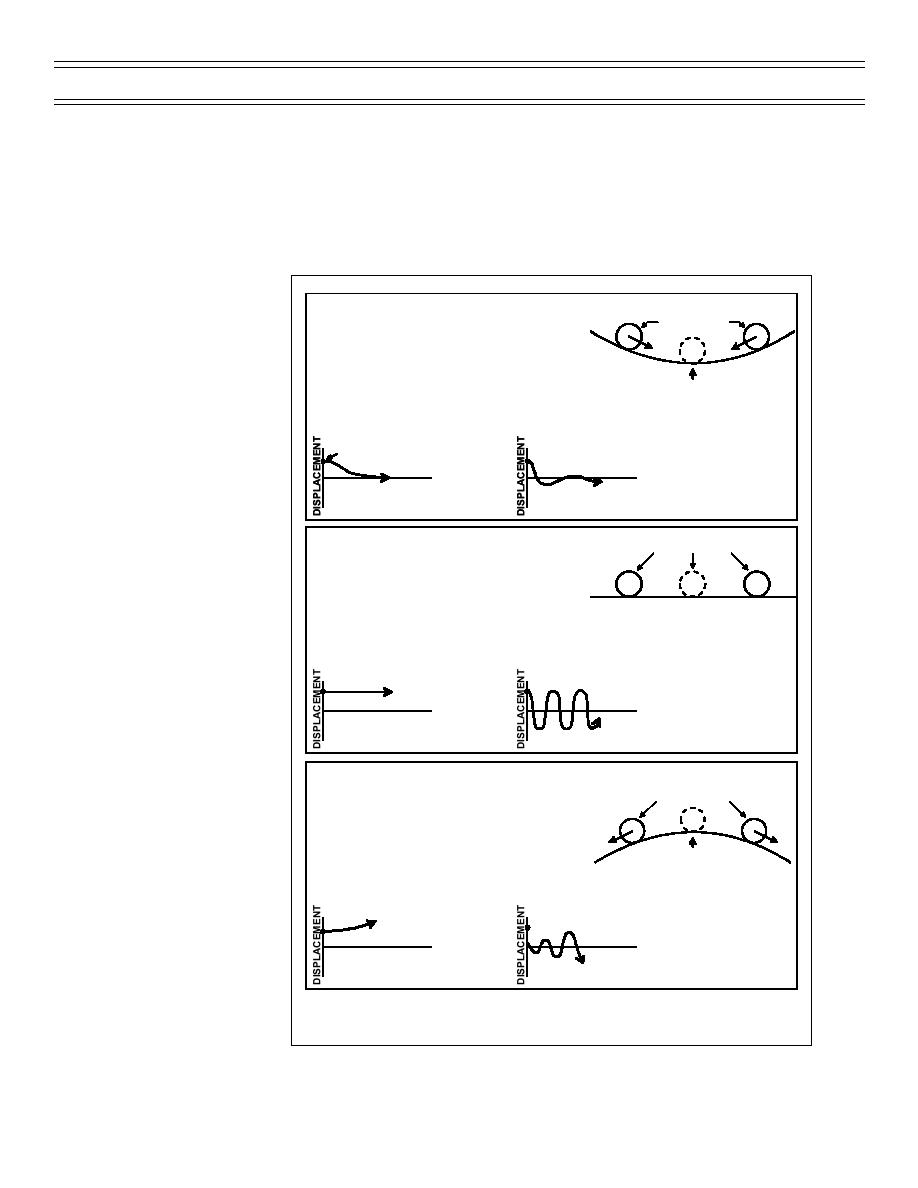
Aero Chapter 01, General Aerodynamics Review
T-45 Aerodynamics Student Workbook
STATIC STABILITY
Static stability indicates the initial tendency of the aircraft to return to equilibrium following some
disturbance from equilibrium. An aircraft may display positive static stability, a tendency to return to
equilibrium; negative static stability, a tendency to continue in the direction of displacement; or neutral
static stability, a tendency to neither return to equilibrium nor to continue in the direction of displacement
(Figure 7).
DYNAMIC STABILITY
While static stability is
Tendency to Return
concerned with the initial
to Equilibrium
tendency of an aircraft
when disturbed from
equilibrium, the resulting
motion with time defines
Equilibrium
POSITIVE STATIC STABILITY
POSITIVE DYNAMIC STABILITY:
dynamic stability (Figure
the amplitude of motion of a disturbed object
7). In any system,
decreases with time.
positive static stability is
Initial Displacement
a necessary but not a
sufficient condition for
NON-OSCILLATORY
OSCILLATORY
the existence of positive
(Positive Static)
(Positive Static)
TIME
TIME
(Positive Dynamic)
(Positive Dynamic)
dynamic stability. If
there is a tendency to
Equilibrium Encountered
at Any Point of Displacement
return to equilibrium,
static stability is positive.
However, dynamic
stability may be positive
NEUTRAL STATIC STABILITY
(dampening), neutral
NEUTRAL DYNAMIC STABILITY:
(same amplitude of
the amplitude of motion of a disturbed
oscillations), or negative
object remains constant with time.
(increasing amplitude of
oscillations with positive
static stability). If static
NON-OSCILLATORY
OSCILLATORY
stability is neutral,
(Neutral Static)
(Positive Static)
TIME
TIME
(Neutral Dynamic)
(Neutral Dynamic)
dynamic stability will be
neutral, and if static
stability is negative,
Tendency to Continue
in Displacement Direction
dynamic stability is also
negative.
Equilibrium
NEGATIVE STATIC STABILITY
NEGATIVE DYNAMIC STABILITY:
the amplitude of motion of a disturbed
object increases with time.
NON-OSCILLATORY
OSCILLATORY
(Negative Static)
(Positive Static)
TIME
TIME
(Negative Dynamic)
(Negative Dynamic)
Figure 7: STATIC AND DYNAMIC STABILITY
Page 5
(7-99) Original



 Previous Page
Previous Page
